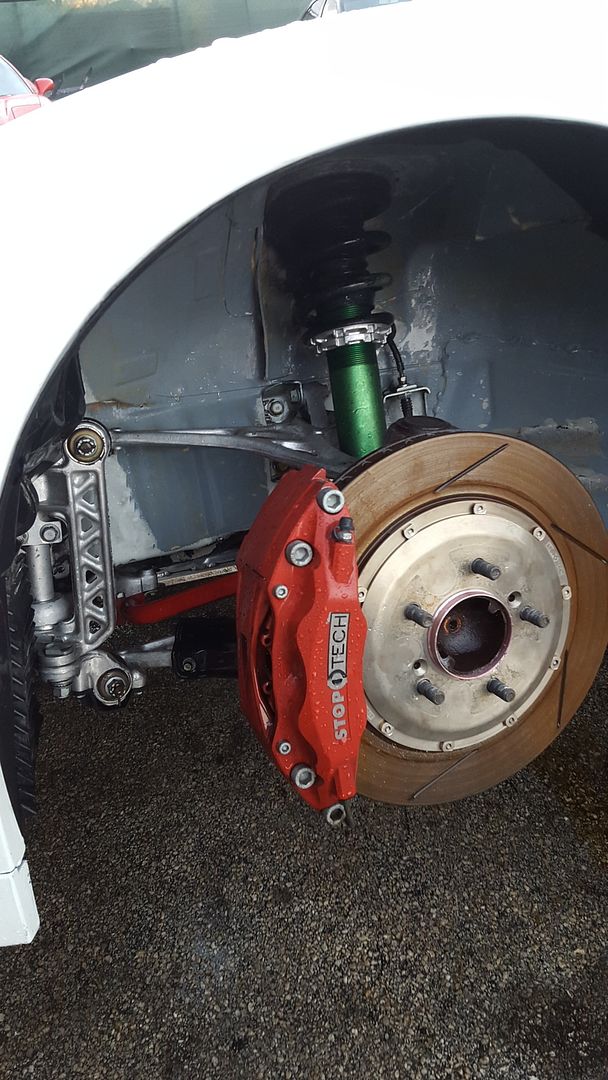Dude, 7 of the 11 lap times you listed in post #89 were Horst's. Here's the list again, this time including the drivers:
7:52 BMW M4 (Horst von Saurma, Sport Auto issue 7/2014)
7:52 Lamborghini Gallardo LP 560-4 (Horst von Saurma, Sport Auto issue 12/2003)
7:54 Mercedes CLK DTM AMG (Horst von Saurma, Sport Auto issue 3/2005)
7:54 Nissan GT-R 2008 (??? Horst von Saurma's time: 7:38)
7:54 Porsche 911 Turbo 997 (Horst von Saurma, Sport Auto issue 5/2007)
7:55 Caterham R500 Superlight (???)
7:55 Ferrari F430 F1 (Horst von Saurma, Sport Auto issue 1/2006)
7:56 Chevrolet Corvette C5 Z06 (???)
7:56 Porsche 911 Turbo (Horst von Saurma, Sport Auto issue 5/2007)
7:56 Ferrari 360 Challenge Stradale f1 (Horst von Saurma, Sport Auto issue 2/2004)
7:56 Honda NA2 NSX-R (Motoharu "Gansan" Kurosawa. Horst von Saurma's time: 8:09)
Oh sorry, well either way..... as stated, Horst's time mean nothing to me and never will.... To me I will only take the word of whomever has the most experience... Thus in Japan the NSX-R and NSX zero carry massive premiums against supposedly faster cars, they have to be fast and anyone over here or in germany, or you claiming other wise means absolutely nothing.
Here the most confusing part.... Your an NSX owner........ and your WELL aware every NSX has been hated on and doubted for 25 years. even normal NSX's over here outpaced much faster cars on American soil including the Viper on one review. many years ago. In 1990 it showed the automotive industry it was in the dark ages and forced all manufactures to smarten up. Which has brewed hate since day one with its meager numbers.
The built is NSX is still one of the most capable platforms ever made as proven by FactorX & Billy and Coz, and 1ktogo, and many others......
I can tell you this, I can only speak for myself and as as a previous 911 owner and still massive Porsche fan and current BMW owner and fan all my current and previous 8-10 cars are BMW's except the NSX... I am 100% confident my current amateur N/A setup would destroy a 996 GT3, which i have driven many times, and I doubt I have genuinely surpassed OEM NA2 NSX-R overall. I just posted a track video of me out accelerating a brand NEW M4 various times in different areas, and basically accelerating nearly as fast as a 997 GT3 and 911 turbo a few times in the straights in a lightweight NSX and pushing over 1G-1.1G consistently in all turns at respectable speeds and a few times over 1.1G peaking at 1.2G as evidenced by Billy's professional MOTEC data logger... in a STREET CAR with out any proper setup nor non-compliance bits and aftermarket 10 year old tein-RE Billy ran 1:41 at homestead with me (190lbs) in the car slowing it down that is knocking on the door of 1:35-1:38 new GT3 real professional race car times.... The NSX is extremely capable when weight reduced.. and your severely underestimating it all of a sudden. I don't know how more evidence of the NSX's capabilities there is than lightened average street car with professional data logger doing things many modern cars don't do.
Your just adding to the overall NSX confusion and doubt which is widespread.... which is very strange.... and pointless.. as previously stated what are you trying to accomplish?
Here is the video mentioned above if you have not seen it yet, watch the G-meter closely and see the times and areas when I'm further away from other cars in the straights, some places you can tell where people are on full acceleration on it.
Some of these drivers are not experienced so do not just simply watch who were passing there are certain indicators to pay attention to:
In these points in the video driver ability can be removed since its just comparing acceleration. and everyone knows even after you get a point by and they get off gas for a second... people still like to get back on the gas for a few seconds to quickly drag race you.
1:23 red 997 GT3 points me by, slowing down for me to pass... but then gets back on the gas (you can see his bumper in bottom corner drag racing me)
3:41 going on straight is there is a black 996 turbo up ahead already on straight with 500hp its not pulling much on me
4:20 me and the same 500hp 996 turbo both get on gas in full to pass for few seconds, i stop cause did not get point by.
5:00 both same 500hp 911 assumed on full acceleration
6:11 both same 500hp 911 of us assumed on full acceleration for simultaneous pass around other car
turn 10 is 80-100mph almost every lap is .9-1G sometimes 1.1G
turn 6 and 8 both constantly over 1-1.1G up to 1.2G many others.. over 1G turns as well.
lap times, data, relative acceleration, what else does anyone need to see any NSX's general capability?
Porsche and GTR lap time discussions. for reference
http://rennlist.com/forums/997-gt2-gt3-forum/637512-homestead-lap-times.html
http://www.gtrlife.com/forums/topic...emy-homestead-fl-sept-30-oct-2nd/page__st__80
<iframe width="420" height="315" src="https://www.youtube.com/embed/fhOm7Tt6vQ0" frameborder="0" allowfullscreen></iframe>
I'm black line 1:44 and billy is the red line 1:41.
There no better evidence than understanding this is very amateur N/A 3.0L only bolt-ons setup car, with crap OEM 5spd LSD, only handeling mods are a dali front sway bar and Tein-RE... You can only imagine what a real factory built and tuned NSX-R would do..
<a href="http://s172.photobucket.com/user/tiago3/media/Tiago%20NSX%20Homestead%20Data.jpg.html" target="_blank"><img src="http://i172.photobucket.com/albums/w15/tiago3/Tiago%20NSX%20Homestead%20Data.jpg" border="0" alt=" photo Tiago NSX Homestead Data.jpg"/></a>
Last edited:








